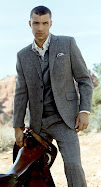As mentioned in the previous post, a tie and a collar should have about the same width for optimal effect. But what about the tie knot? Care should be taken here, as well. There are a number of ways to tie a knot, and I'll talk about the 3 most common here: The full Windsor, the half Windsor, and the four-in-hand. Each has it's place, and a few are more versatile than others.

full Windsor, half Windsor, four-in-hand
Full Windsor: Very symmetrical and the largest of the 3, it forms a wide triangle and is best suited for wearing with wider collars. Somewhat erroneously named for the Duke of Windsor, who liked to sport a large knot and so had extra-thick ties commissioned, which he tied with a four-in-hand knot, not a windsor. People who tried to emulate his big knot using normal sized ties originated the knot.
Pros: It tends to stay in place quite well and has a more formal appearance, making it the choice of many professionals.
Cons: Usually too symmetrical, making your look have an overly-studied appearance, like you spent an hour in front of the mirror. It looks best with wider collars, so it's versatility is limited. James Bond said in From Russia With Love that a Windsor was the mark of a traitor. The jury is still out on that.
Half Windsor: Also symmetrical but not as large as the Windsor.
Pros: Gives a neat appearance while not being as large as the Windsor, so it's more versatile. Can be worn with a wider variety of collars.
Cons: The symmetry issue, again.
Four-in-hand: The most common knot and maybe the easiest to tie. Its asymmetry, narrowness, and smaller size set it apart from the Windsors.
Pros: Gives variety to the otherwise symmetrical appearance of shirt collars and suit jacket lapels. With a tie that has good thickness, it produces a knot that is neither too large nor too small. Looks great with ties of all widths, and should be the only choice for narrower ties. It's typically the knot used with a more contemporary look.
Cons: If your tie has good thickness, the knot has great versatility. With thin (not narrow--thin) ties it makes a small knot. So the four-in-hand may be too small for wider collars if the tie isn't adequate.


















